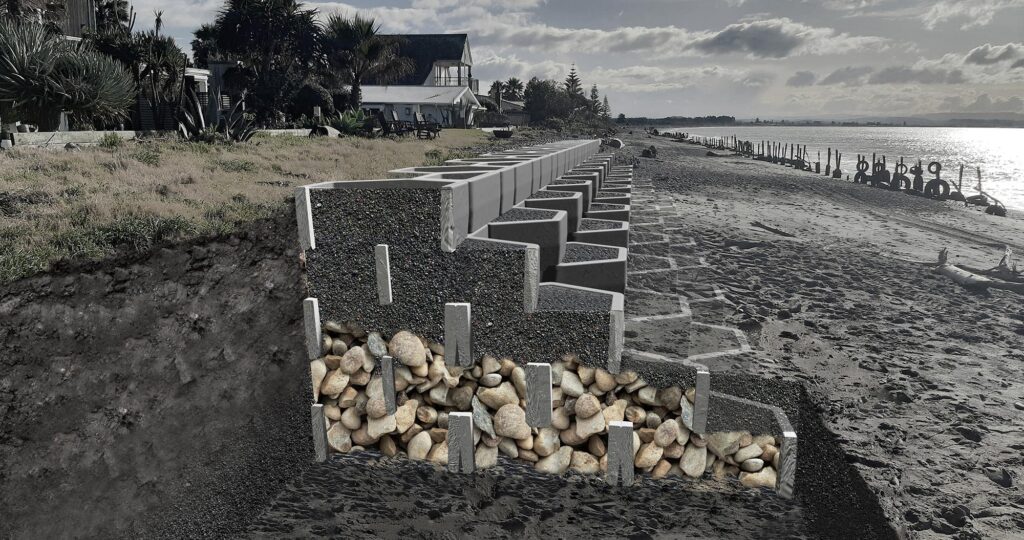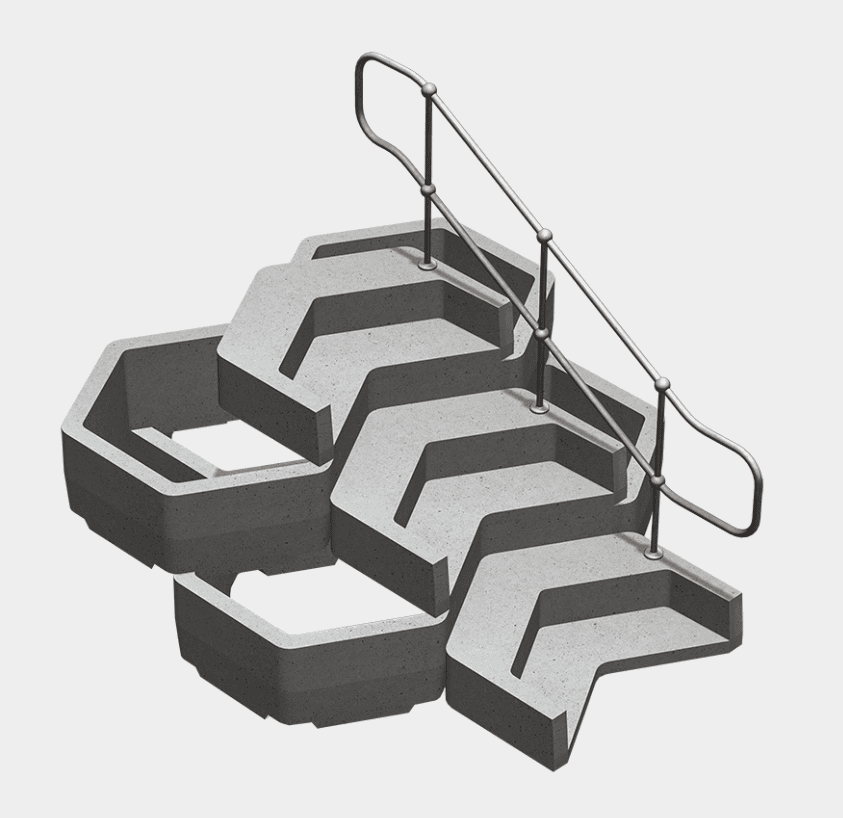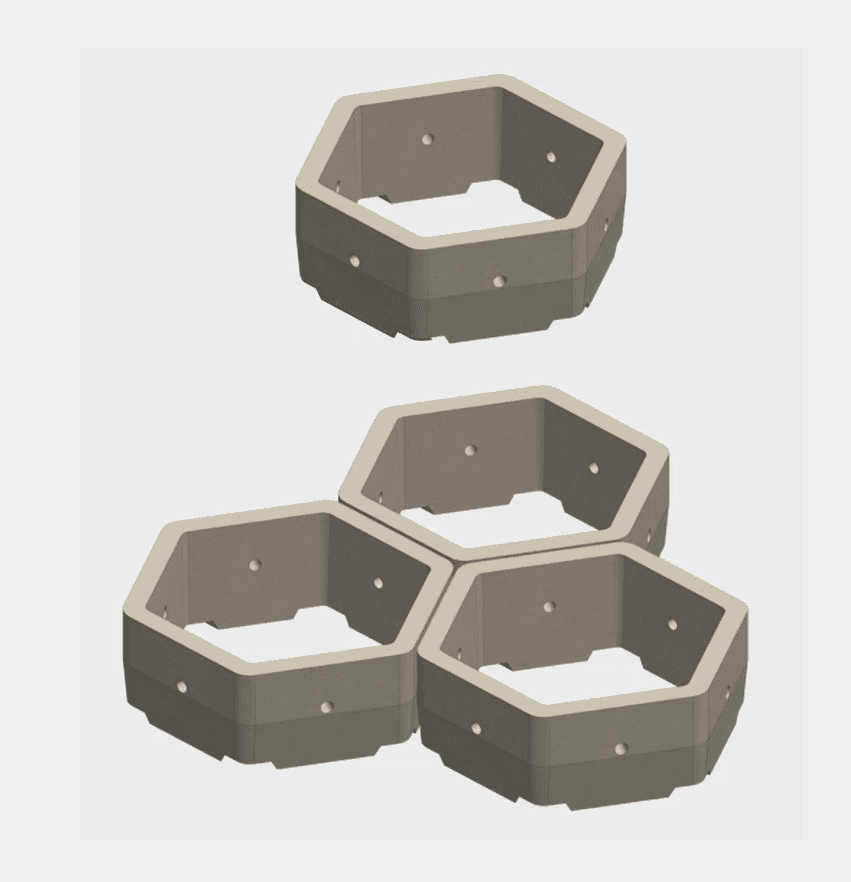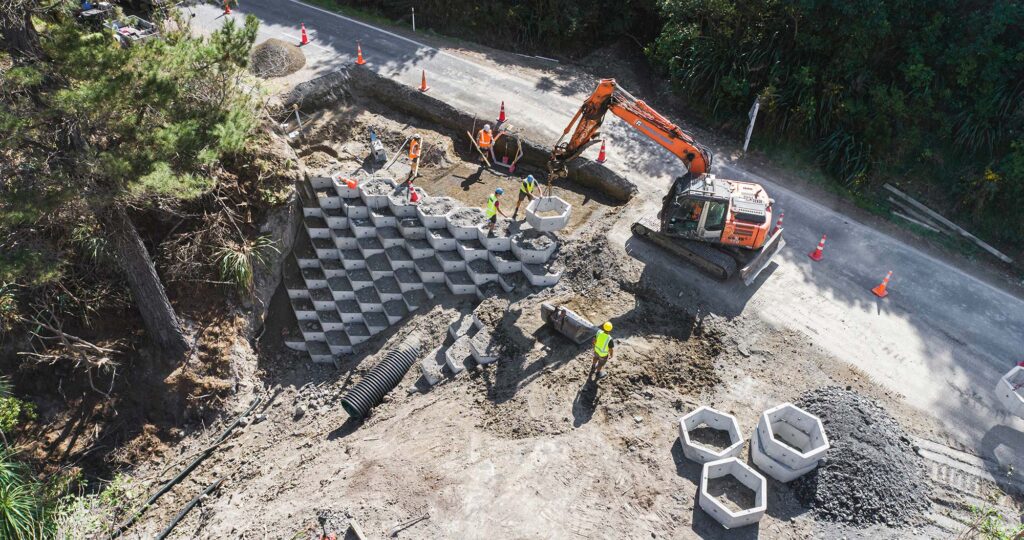In our continuous exploration of bio-inspired solutions that contribute to sustainable development and environmental conservation, we are thrilled to introduce Ecoreef, a company located in Lower Hutt, Wellington and its innovative product that harnesses the power of nature’s design to protect and restore coastal environments. Drawing inspiration from one of nature’s most enduring shapes, the hexagon, Ecoreef embodies the principles of biomimicry to address the challenges posed by coastal erosion and infrastructure vulnerability.


The Power of the Hexagon
The hexagonal module of Ecoreef, known as ER-14, is a testament to the strength and efficiency found in nature. This shape, which forms the structural foundation of honeycombs, is renowned for its ability to provide maximum strength with minimal material use. Ecoreef leverages this natural geometric efficiency to create strong, self-supporting, and interlocking structures capable of withstanding the demanding conditions of coastal environments.




Ecoreef Interlocking System: Harmony Between Strength and Flexibility
The Ecoreef system comprises interlocking hexagonal modules that work in unison to control and mitigate the force of water movement, effectively “de-powering” waves and reducing their erosive potential. This interlocking design allows for flexible configurations, making Ecoreef adaptable to various coastal contours and conditions. Its modular nature not only facilitates rapid construction and minimal site preparation but also makes it an efficient solution for transportation and installation.



Enhancing Ecosystems and Accessibility
Ecoreef isn’t just a defense against coastal erosion; it also enriches ecosystems and improves access. The modules double as planters, welcoming everything from Spinifex to Pohutukawa, deepening roots into the structure to strengthen the area. Additionally, Ecoreef integrates stair and ramp modules for easy access across varying terrains, even offering disabled access in steep coastal zones. Its unique interlocking design ensures each module is securely held, making Ecoreef resilient in demanding conditions. This combination of ecological support and accessible design showcases Ecoreef’s commitment to harmony with nature and community inclusivity.



A Testament to Resilience
Recent deployments of Ecoreef, such as the Dropout Repair project and the construction of a bridge abutment, demonstrate its effectiveness in providing long-term protection for infrastructure and public access areas. From repairing severe weather-induced dropouts to safeguarding bridge foundations and protecting roadways from coastal erosion, Ecoreef has proven to be a versatile and resilient solution.

A Bio-Inspired Solution for Today’s Challenges
Ecoreef, as a prime example of bio-inspired design, offers innovative solutions to environmental challenges and promotes sustainable development. Drawing on the strongest shape found in nature, the hexagon, it achieves maximum support with minimal material use. This design provides long-term protection for public property and infrastructure and creates a safe environment for public access, offering an economically efficient and durable solution through its sturdy and self-supporting structure. The interlocking system of Ecoreef simplifies site preparation and construction, is easy to handle, efficient to transport, and requires no extensive foundation. More importantly, this approach effectively guards against direct damage from erosion and weather as well as supports broader ecological restoration and habitat preservation, demonstrating a harmonious coexistence between innovative construction and environmental protection.
For more information, go to the website via: Ecoreef – Coastal Erosion Protection
More important, stay tuned to our website for more insights into how biomimicry is shaping the future of sustainable development and environmental conservation.

